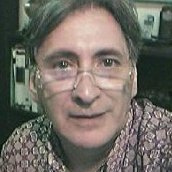Meltdown Likely Under Way At Japan Nuclear Reactor
-
Recently Browsing 0 members
- No registered users viewing this page.
-
Topics
-
Popular Contributors
-
Latest posts...
-
21
Non O Extension Renewal | Timing and Travel Question
Ah, I get it. You get some very good personalized service there in Roi Et. Come on in, you're good to go! Thanks for such a detailed and informative response. -
27
Thailand Implements Financial Requirements for Tourist Visas in 2025
This shouldn't be a big deal for the normal tourist, but this isn't aimed at them. Also, This isn't new, it's just they haven't been enforcing it for what....the last decade or so. This is Thailand and this how they set things up for IO's to make money. actually this is easier, it used to be you had to have cash, no bank statement was accepted. -
5
-
5
Loosing sight
Go to get your eyes checked. You may have a situation that can be corrected -
3
THAILAND LIVE Thailand Live Monday 19 May 2025
Tragic End for Missing DJ as Body Found with Tied Hands, Gunshots Picture courtesy of Amarin TV The music community and the residents of Kanchanaburi are in shock following the grim discovery of Warapong Khunsrijaturong, also known as DJ Tete. The 33-year-old, who vanished under mysterious circumstances, was found dead with his hands tied and gunshot wounds at his temple. Full story: https://aseannow.com/topic/1361005-tragic-end-for-missing-dj-as-body-found-with-tied-hands-gunshots/ -
0
Crime Tragic End for Missing DJ as Body Found with Tied Hands, Gunshots
Picture courtesy of Amarin TV The music community and the residents of Kanchanaburi are in shock following the grim discovery of Warapong Khunsrijaturong, also known as DJ Tete. The 33-year-old, who vanished under mysterious circumstances, was found dead with his hands tied and gunshot wounds at his temple. The unsettling find has ignited a fervent search for answers as investigators rally to piece together the circumstances surrounding his tragic demise. DJ Tete was reportedly abducted in the early hours of May 14, at around 3.53 am, from Pruksa Kan 5 Village, Soi 7, Tha Makham subdistrict, Mueang district. The abduction was captured on CCTV, sparking widespread concern for his safety and subsequent pleas for his release. The perplexing case took a dire turn when his body was discovered in the Wang Dong subdistrict. In their quest for clarity, police have detained two suspects connected to the case. However, both individuals have denied any involvement and refused to cooperate with the investigation. Authorities have seized the suspects' vehicle for a detailed inspection to uncover any potential clues. Meanwhile, investigators scoured a remote area behind a golf course following the last known signal from DJ Tete's phone. There, they uncovered a mix of car parts, including four tyres from a Suzuki Swift, though their connection to the incident remains unclear. The chilling discovery of DJ Tete's body marks a sombre moment in the ongoing investigation. The victim was reportedly dressed in the same attire as on the day of his disappearance. Forensic officers and Provincial Police Region 7's commissioner have converged on the scene to continue their meticulous examination, with further developments anticipated in the coming days. Tensions run high among those involved, with one suspect reportedly damaging a journalist's camera. DJ Tete's father, in a desperate quest for justice, made a gruelling 12-hour journey to lodge a report, still hopeful for his son's return at the time. In separate yet equally distressing news, a 54-year-old woman was found drowned in a pond in Udon Thani on May 12. She had reportedly been distressed over family-related issues. Police are investigating this incident as well, highlighting a tragic period in the region. As authorities delve deeper into DJ Tete's case, the community remains on edge, eager for clarity and justice. The investigation continues, with officials determined to untangle a web of mystery that has left many questions unanswered. Adapted by ASEAN Now from The TH haiger 2025-05-19
-
-
Popular in The Pub
-








Recommended Posts